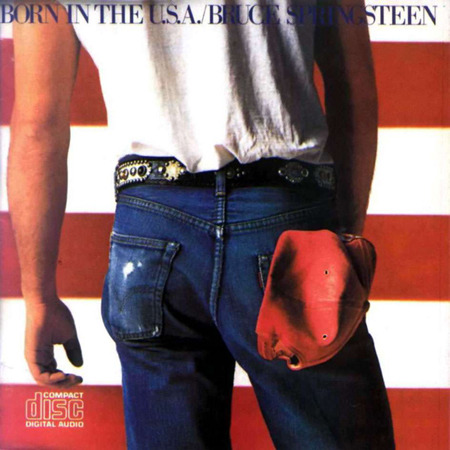This just in…

The first kick I took was when I hit the ground.
So it seems that it sometimes takes a number of arty types to explain something as fundamentally proletariat as humble, timeless blue jeans.
I’d love to go off on this subject, but I couldn’t do a better job than The Vancouver Sun:
Workaday staple and fashion favourite, blue jeans have conquered the planet. But were they born in the textile mills of New Hampshire, on France’s southern coast or the looms of north Italy?
Art historians believe they have found a piece of the centuries-old puzzle in the work of a newly discovered 17th-century north Italian artist, dubbed the “Master of the Blue Jeans”, whose paintings went on show in Paris this week.

Nothing comes between me and my...oh well...you know...
Running through his works like a leitmotif is an indigo blue fabric threaded with white, with rips revealing its structure, in the skirts of a peasant woman or the jacket of a beggar boy.
“The works are very attached to the detail of clothing – it was very rare for a painter to characterise the poor with such detail,” said curator Gerlinde Gruber, who helped to identify the anonymous artist’s works.
“And there is blue jean in every painting except one,” she said.
Other details in his work, such as a knotted white kerchief in a painting entitled “Mother Sewing”, enabled curators to locate the scenes in northern Italy, in the region of Venice.
Historians have long traced jeans’ ancestry to two sources outside the United States: a sturdy fabric from the French city of Nimes – “de Nimes”, hence “denim” – on the one hand, and a cotton fustian from Genoa in Italy – “Genes” in French, becoming “Jeans” in English – on the other.
But unlike the finery worn by the upper classes, the clothes of the peasant classes were used until shredded through, leaving no trace.
Until now there were only fragmented written records to rely on to document the shipments of low-cost fabric that flooded from Genoa into northern Europe – and especially England – in the mid-17th century.

It's not easy wearing jeans...
“We have accounts from an English tailor saying that his fabric came from Genoa, and that is the origin of jeans,” said Gruber. “But this gives us new documentary proof of a historical reality that has been forgotten.”
In a further quirk, the blue tint of the fabric was painted with the exact same indigo as that used to dye today’s denim, according to curators.
Centuries later, husband and wife design team Francois and Marithe Girbaud earned a reputation as modern-day masters of the jeans world – as pioneers of the baggy hip-hop look, of stonewashing or stretch denim.
“This calls into question the entire history we have been telling up until now,” said Francois Girbaud, who partnered with the Paris exhibition. “And that’s what’s fun.”
“In people’s minds, jeans used to be all about Marilyn Monroe, James Dean, about the United States,” he said. “Nimes or Genoa? I don’t have the answer. But it’s amusing to think that jeans already existed in 1655.”
Ten paintings have been attributed to the Italian artist, eight of which are on show in Paris alongside works by contemporaries such as Michael Sweerts or Giacomo Ceruti, loaned from museums and private collections in Rome and Vienna.
How they came together in Paris is a detective story in itself.
In 2004, the Paris-based gallery owner Maurizio Canesso bought a work in New York by an unknown artist of the Neapolitan school.
Trying to track down the origins of the painting, “The Barber’s Shop”, Canesso found a copy in a museum in Varese near Milan and says “that was when the search really began.”
At the same time in Italy, unknown to him, Gruber had been joining the dots between works she believed to be by the same artist, who she dubbed “The Master of the Blue Jeans” because of the recurring presence of the fabric.
Her search began after two works thought to be by his hand surfaced within a short space of time – the “Woman sewing with two children” and the “Beggar boy with a piece of pie”.
Canesso’s curiosity was aroused by a 2006 article in which Gruber described the paintings, and over the following few years he purchased all the available works attributed to the artist.
With their use of vivid blue set against chiraoscuro backdrops, and focus on humble everyday scenes, the works’ value is estimated at between 60,000 and 800,000 euros according to the Canesso gallery.
Enjoy and leave a comment!
Stay Awake!
Joe Nolan <3








Cool, been a huge fan of the blog for a long time. Keep it up.
james
hip hop
Tight work
dave
top hip hop songs
Good looks
mark
top hip hop songs
Good lookin out
ben
hip hop songs
You always have great posts, keep it up!
Hey, my very first comment on your site, I have been reading your blog for a while and thought I would pop in and drop a friendly note finally, as a way to thank you. It is indeed great stuff that you write. I also wanted to ask..is there a way to subscribe to your site via email?… – Drop me a visit at my replica watch store sometime!
There is an rss feed link at the bottom of the page.
You have my vote
Have a excellent day! Thanks for sharing. :0
much appreciated a rather current area with me as well at this moment in time.
I like the way how you demonstrated your language on your post, Forever in Blue Jeans Joe Nolan's Insomnia.
how are you?
Thanks for writing this blog, loved reading it
Thanks for the repost!